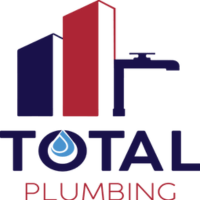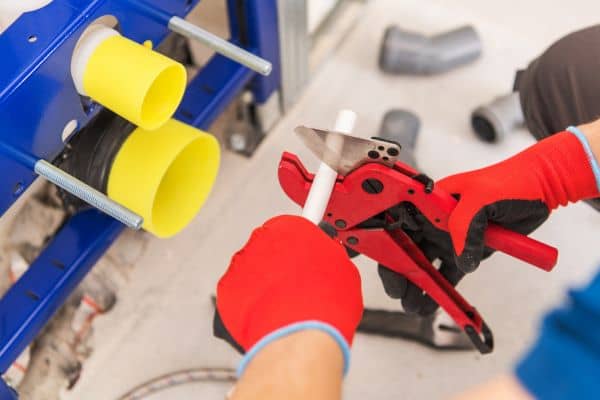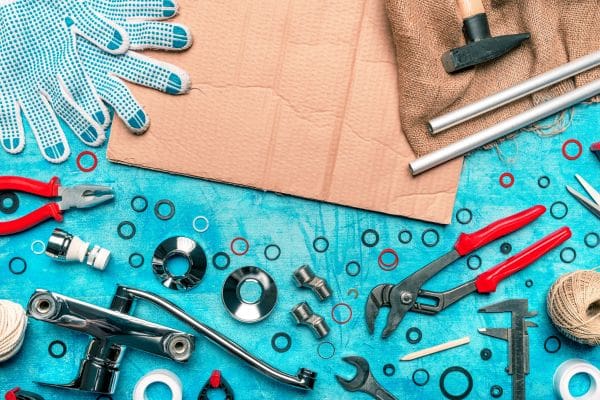How Plumbing Works in an Apartment Building
Written by Total Plumbing Team
Published:
Living in a residence building offers a convenient and often exciting lifestyle.
Have you ever turned on your tap and wondered how water magically appears? Or why, when you flush your toilet, everything. Disappears?
In the apartment, these everyday occurrences are part of a complex and intriguing plumbing system.
Let’s understand how plumbing works in an apartment building.
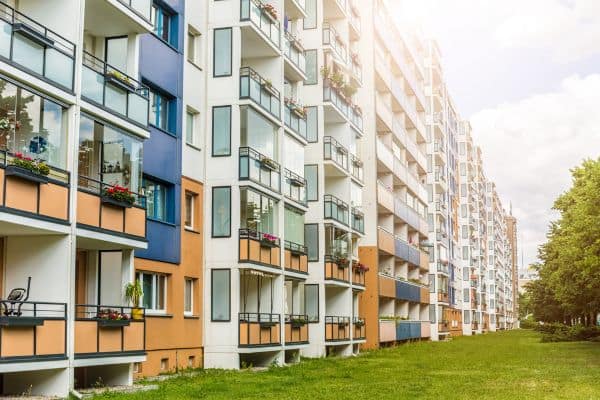
How Plumbing Works in an Apartment
The plumbing work operates like a well-oiled machine. It’s a complex system designed to serve numerous households efficiently.
Imagine a web of pipelines, each one a lifeline, connecting every apartment unit to the central systems.
This network ensures that everything happens flawlessly, whether you’re taking a shower, washing dishes, or just quenching your thirst.
Multiple Dwelling Apartments Plumbing System
Think about a large apartment complex. With so many residents, the Plumbing infrastructure must be robust enough to handle the increased water usage and waste disposal demand.
In these setups, the plumbing pipes are interconnected in a sophisticated manner.
However, they’re designed so that a leak or blockage in one apartment doesn’t wreak havoc on the entire building.
Multi-Story Dwelling Apartment Plumbing System
Now, let’s scale up to multi-story apartment buildings. The higher you go, the more significant the role of water pressure becomes.
To ensure that residents on the top floors have the same water flow as those on the lower levels, intricate systems involving pumps and water tanks are installed, often on the ground floor or basement.
This setup guarantees that water reaches every floor, maintaining a consistent flow throughout the Residential complex.
Components of an Apartment's Plumbing System
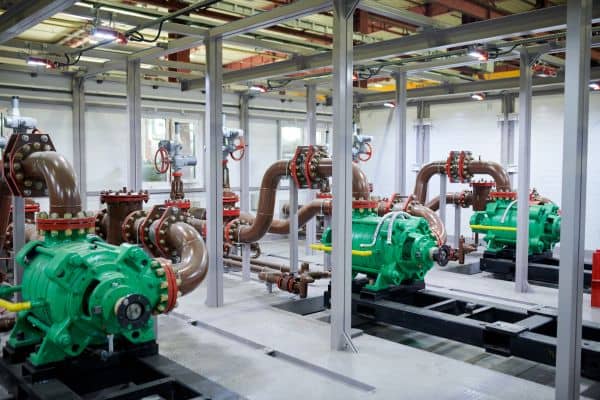
Understanding the components of an apartment building’s plumbing system is crucial for residents and managers.
It helps in quick troubleshooting and maintaining the system effectively.
Water Supply System
The water supply system in an apartment is designed to ensure that bring fresh water to every unit.
This system includes a network of pipelines, often made from copper or PVC, which transport water from the municipal supply to the building.
In some cases, water comes from storage tanks placed on the ground floor, basement, or the building’s roof and is used to ensure consistent supply and pressure.
Source of Water
The primary source of water in the building is typically the city’s municipal supply.
This water is treated at the source, making it safe and ready for daily use.
Water Distribution
Water distribution within the housing building is a carefully planned process.
Pipes branch out from the main line to individual apartments, ensuring equal and uninterrupted water distribution.
Individual Apartment Water Supply
Each unit has a unique Water delivery system equipped with valves for control.
This means that residents have the autonomy to manage their Water delivery system and ensure that a plumbing problem in one unit doesn’t affect the entire floor or building.
Hot Water Systems
No one likes a cold shower, right? That’s where hot water systems come in.
These centralized systems feature large boilers and storage tanks to ensure every unit’s steady hot water supply.
Water Pressure
Water pressure in high-rise buildings is a vital aspect. It’s all about striking the perfect balance to ensure water reaches the highest floors effectively, often achieved through pumps and regulators.
Drainage System
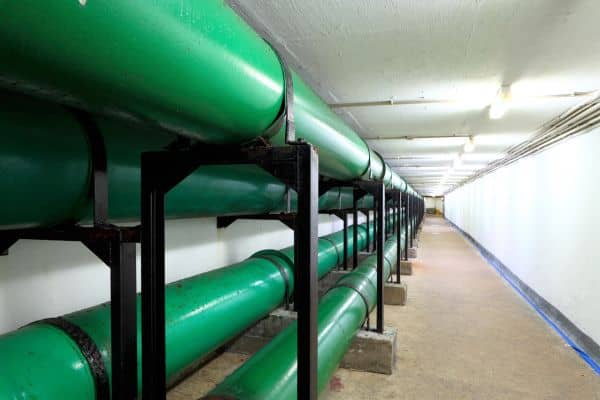
Now, let’s delve into the workings of the waste system in a residence building.
This system is the unsung hero that discreetly carries away wastewater.
It consists of a network of larger water pipes strategically placed to ensure a smooth flow of waste to the municipal sewage systems.
Gravity-fed Drainage
Most apartment buildings rely on gravity-fed drainage systems.
These are designed to use gravity to naturally guide water through the pipeline, ensuring efficient wastewater removal.
Vent Pipes
Vent pipes play a crucial role in maintaining the efficiency of the Water Drainage.
They prevent vacuum formation in the water line, ensuring smooth water flow and preventing any unpleasant blockages.
Sewer Connection
Every home is hooked up to the municipal sewer system.
This connection is essential for disposing of wastewater safely and efficiently, keeping our living spaces hygienic and pleasant.
Maintaining the Drainage System
Regular Maintenance is the key to a healthy Wastewater system.
This includes routine cleaning and inspections to ensure everything functions as it should.
Most Common Plumbing Issues in an Apartment Buildings

Clogged Drains
Clogged drains are a common headache in the home. They can occur from a buildup of everyday materials like hair or grease, and while often manageable, they can be quite a nuisance.
Leaking Faucets
Leaking faucets are more than just a dripping annoyance. If not addressed promptly, they can lead to higher water bills and potential water damage.
Running Toilets
A constantly running bathroom is not only irritating but also wasteful. It’s a common issue that can significantly impact water bills and resource conservation.
Low Water Pressure
Low water pressure is often a telltale sign of an underlying issue in the Piping system, like a leak or blockage. It can affect the quality of daily activities like showering or washing dishes.
Hot Water Issues
Inconsistent or inadequate hot water is a common complaint in apartment buildings, especially during peak usage times.
Frozen Pipes
In colder regions, burst pipes can be a major concern, potentially leading to bursts and significant water damage.
Water Hammer
A water hammer is a startling noise when water in pipes suddenly stops or changes direction, typically due to a valve closing quickly.
Sewer Line Clogs
Sewer line clogs are a more severe issue, often resulting in backups and requiring immediate professional attention.
How to Troubleshoot Plumbing Problems
When faced with a plumbing problem, the first step is pinpointing the issue.
Simple tools like a plunger can sometimes resolve minor problems. However, persistent issues call for professional intervention, necessitating experienced plumbing services.
Routine Maintenance Tips for Apartment Plumbing
Maintaining the plumbing system in your apartment is crucial for ensuring everything runs smoothly.
Here are some tips to keep your Residential plumbing in top condition:
- Regular Inspections: Periodically inspect all visible pipes and plumbing fixtures for signs of wear, leaks, or damage. Early detection can prevent major issues.
- Mindful Flushing: Be careful with what you flush down the toilet. Avoid disposing of non-biodegradable items, as they can cause blockages.
- Sink Care: Avoid pouring grease, coffee grounds, or food particles down the sink. These can solidify and clog your pipes.
- Hot Water Flush: Run hot water down the drains every so often. This can help dissolve and clear out any accumulating grease or soap scum.
- Leak Checks: Keep an eye out for dripping faucets or running Bathroom. These are not only wasteful but also signs of potential problems.
- Drain Strainers: Use strainers in your sinks and showers to catch hair and other materials. This simple step can significantly reduce clogs.
- Professional Maintenance: “Make sure to have a plumber check your plumbing regularly to keep everything working well.” They can spot missed issues and ensure your Piping system is healthy.
- Winter Precautions: If you live in an area with cold temperatures, prevent frozen pipes. This might include insulating pipes and maintaining a steady indoor temperature.
- Educate Everyone: Make sure all household members understand the basics of plumbing care. Simple practices, when followed by everyone, can make a big difference.
- Emergency Measures: Know how to turn off the water in case of a major leak. This can prevent flooding and water damage until help arrives.
Final Thought
Understanding how plumbing works in a Multi-unit dwelling not only equips you to handle common plumbing issues but also contributes to maintaining a healthy, comfortable living environment.
Whether you live in an apartment or manage one, staying informed about your apartment building plumbing system is a proactive step towards a well-functioning, hassle-free home.
Frequently Asked Questions
How does the water system work in an apartment?
The water system works through a network of pipes that connect to the municipal water supply.
These pipes distribute water to each unit in the building, with mechanisms in place to ensure consistent water pressure and supply.
Can a clogged sink affect others in an apartment building?
clogged sink in one apartment should not affect others. Each apartment’s plumbing system is designed to be somewhat independent.
However, if the blockage is in the main Water Drainage, it could impact multiple units.
Are all pipes in an apartment connected?
Yes, in a way. All the pipes in an apartment building are part of a single, interconnected system of pipes.
However, the system is designed to handle the water supply and wastewater system separately, and issues in one apartment usually don’t affect another.
What is the safest pipe for drinking water?
The safest pipes for drinking water are usually those made from copper, PVC (polyvinyl chloride), or PEX (cross-linked polyethylene).
These materials are durable, corrosion-resistant, and less likely to leach chemicals into the water.
Total Plumbing Content Team
Total Plumbing Solutions content team offers useful tips and guidance on plumbing information.
Our writers specialize in plumbing and craft straightforward content covering safety, installation, repairs, and more.
Our aim? Make your plumbing work safe and easy at home or on the job.
